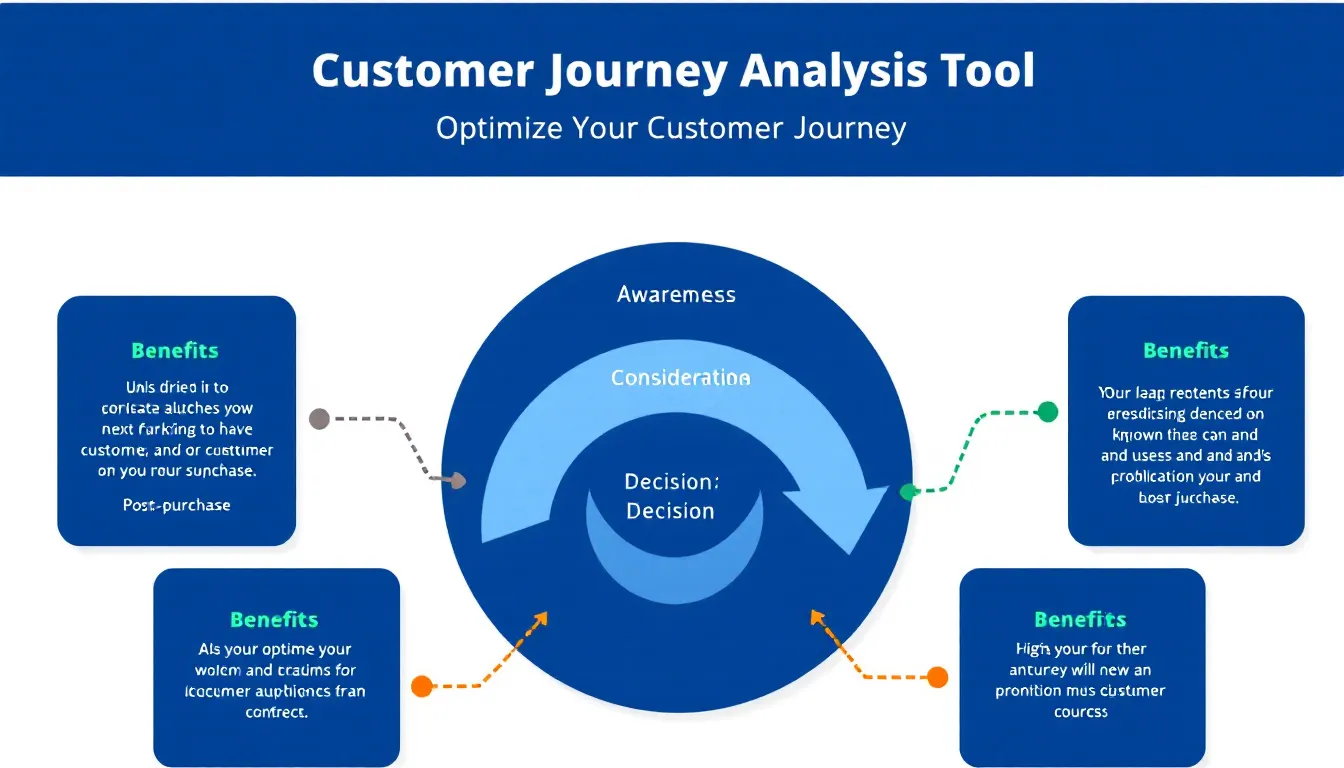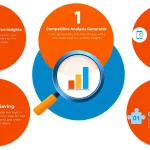Is this tool helpful?
How to Use the Customer Journey Analysis Tool Effectively
To utilize this customer journey analysis tool effectively, follow these steps:
- Company Name: Enter your company’s legal name (e.g., “TechSolutions Inc.” or “GreenLeaf Consulting Group”)
- Product/Service Description: Provide detailed information about your offering. For example: “AI-powered virtual assistant software for healthcare providers” or “Sustainable packaging solutions for e-commerce businesses”
- Target Market Description: Define your audience specifically (e.g., “Healthcare providers in urban areas with 50+ employees” or “Direct-to-consumer brands with annual revenue between $1-10M”)
- Competitors Analysis: List major competitors and their unique selling propositions
- Current Pain Points: Document known customer challenges and frustrations
Understanding Customer Journey Analysis
The Customer Journey Analysis Tool is a comprehensive solution designed to help businesses understand and optimize their customers’ experience from initial awareness through post-purchase engagement. This tool leverages advanced analytics to identify critical touchpoints, pain points, and opportunities for differentiation in your market.
Key Components of Customer Journey Analysis
- Awareness Stage Mapping
- Consideration Phase Evaluation
- Decision Process Analysis
- Post-Purchase Experience Assessment
- Competitive Differentiation Opportunities
Benefits of Using the Customer Journey Analysis Tool
1. Enhanced Customer Understanding
Gain deep insights into customer behavior, preferences, and decision-making processes through comprehensive journey mapping.
2. Competitive Edge Development
Identify unique opportunities to differentiate your offering from competitors by understanding market gaps and unmet needs.
3. Revenue Optimization
Improve conversion rates and customer lifetime value by addressing pain points and enhancing the customer experience at critical touchpoints.
4. Resource Allocation Efficiency
Better understand where to invest resources by identifying the most impactful areas of the customer journey.
Problem-Solving Applications
Customer Experience Optimization
The tool addresses common challenges in customer experience management:
- Identifying drop-off points in the customer journey
- Understanding customer decision triggers
- Mapping emotional responses throughout the journey
- Analyzing competitive advantages and disadvantages
Strategic Decision Making
Support strategic planning through data-driven insights:
- Market positioning optimization
- Product development prioritization
- Service delivery enhancement
- Customer support improvement
Practical Applications and Use Cases
E-commerce Business Example
An online retailer used the tool to analyze their customer journey and discovered that 60% of cart abandonments occurred during shipping cost calculation. This insight led to implementing a free shipping threshold, resulting in a 25% increase in conversion rates.
B2B Service Provider Example
A software company analyzed their enterprise customer journey and identified that the lengthy demo scheduling process was causing prospect drop-off. Implementing automated scheduling reduced time-to-demo by 75% and increased qualified leads by 40%.
Healthcare Provider Example
A medical practice used the tool to evaluate patient experience and found that appointment reminder systems were a major pain point. Implementing a multi-channel reminder system reduced no-shows by 35% and improved patient satisfaction scores.
Frequently Asked Questions
How often should I conduct a customer journey analysis?
Conduct comprehensive analyses quarterly, with monthly monitoring of key touchpoints and metrics.
Can this tool be used for both B2B and B2C businesses?
Yes, the tool is designed to accommodate both B2B and B2C business models, with customizable parameters for each.
What makes a customer journey analysis successful?
Success depends on accurate data input, comprehensive competitor analysis, and honest assessment of current pain points and challenges.
How can I maximize the value of the analysis results?
Share results with key stakeholders, create action plans for identified opportunities, and regularly measure the impact of implemented changes.
Should I analyze different customer segments separately?
Yes, analyzing distinct customer segments separately provides more accurate and actionable insights for each target group.
How does this tool help with product development?
The tool identifies feature gaps, unmet needs, and opportunities for innovation based on customer journey pain points and competitive analysis.
Can startups benefit from this tool?
Yes, startups can use this tool to understand market opportunities, validate business models, and develop customer-centric solutions from day one.
What role does customer feedback play in journey analysis?
Customer feedback helps validate analysis findings and provides qualitative context to quantitative data, enabling more accurate journey mapping.
Best Practices for Implementation
Data Collection Guidelines
- Gather comprehensive competitor information
- Document all known customer touchpoints
- Include both qualitative and quantitative data
- Update information regularly
Analysis Implementation
- Involve cross-functional teams in the analysis process
- Focus on actionable insights
- Prioritize improvements based on impact and feasibility
- Monitor results of implemented changes
Advanced Features and Capabilities
Competitive Analysis
The tool provides detailed competitive analysis capabilities, including:
- Market positioning assessment
- Feature comparison matrices
- Value proposition analysis
- Price point optimization
Pain Point Resolution
Advanced algorithms help identify and prioritize pain points based on:
- Frequency of occurrence
- Impact on customer satisfaction
- Potential revenue impact
- Resource requirements for resolution
Performance Optimization
Continuous Improvement
Implement regular review cycles to:
- Update customer journey maps
- Refine target market definitions
- Adjust competitive positioning
- Optimize value propositions
Success Metrics
Track key performance indicators including:
- Customer satisfaction scores
- Conversion rates
- Customer lifetime value
- Market share growth
Important Disclaimer
The calculations, results, and content provided by our tools are not guaranteed to be accurate, complete, or reliable. Users are responsible for verifying and interpreting the results. Our content and tools may contain errors, biases, or inconsistencies. We reserve the right to save inputs and outputs from our tools for the purposes of error debugging, bias identification, and performance improvement. External companies providing AI models used in our tools may also save and process data in accordance with their own policies. By using our tools, you consent to this data collection and processing. We reserve the right to limit the usage of our tools based on current usability factors. By using our tools, you acknowledge that you have read, understood, and agreed to this disclaimer. You accept the inherent risks and limitations associated with the use of our tools and services.







